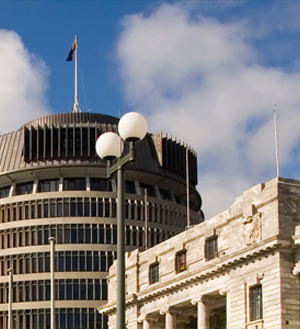A plan to increase Auckland’s long-term housing capacity while shifting development away from high-risk hazard areas has opened for consultation.
Auckland Council (the Council) has opened submissions on Plan Change 120: Housing Intensification and Resilience (PC120). Public submissions are open until 19 December 2025.
PC120 has been introduced in accordance with ministerial direction to use a streamlined planning process to replace Plan Change 78: Intensification (PC78). It proposes to amend the Auckland Unitary Plan (AUP) to increase the city’s long term housing capacity while shifting the pattern of growth towards centres, rapid transit, and key corridors, and away from high-risk hazard areas.
Why PC78 is being replaced
PC78 enabled greater intensification in accordance with changes to the National Policy Statement on Urban Development (NPS-UD) and the Resource Management Act 1991 (RMA). Those changes included a requirement for the Council to incorporate Medium Density Residential Standards (MDRS) into the AUP to enable three-storey housing in residential areas without resource consent.
The RMA has since been amended to allow the Council to opt out of the MDRS and replace PC78 with a new plan change – provided it enables at least the same amount of housing capacity. The Council’s Policy and Planning Committee voted on 24 September 2025 to endorse PC120 for public notification, and PC78 was withdrawn in part on 9 October 2025. The PC78 process continues with respect to changes to the Metropolitan Centre Zone. Changes to the City Centre Zone are already operative, so will not be considered under PC120.
While PC78 supported housing growth in almost every urban zone, the mandatory MDRS failed to concentrate growth around existing or planned infrastructure and services, such as the City Rail Link, which is set to open next year. This led to funding pressures which the Council could not opt out of, and intensification was required even in high-risk hazard areas such as floodplains and coastal hazard zones. PC120 does not include the MDRS and instead the Council aims to target growth to better align with infrastructure and funding, with stronger rules to manage natural hazard risk.
What does PC120 propose?
PC120 seeks to balance increased housing capacity with natural hazard risk management. Its key features include:
- Withdrawal of the MDRS: replacing the citywide MDRS approach with a targeted mix of zones that maintains capacity levels while improving built outcomes. A key mechanism for achieving this is the upzoning of many suburbs to Terrace Housing and Apartment Buildings or Mixed Housing Urban zones.
- Strengthened natural hazard management: a new risk management framework is proposed that better recognises levels of exposure, vulnerability, and consequences of flooding coastal erosion, and land instability. It proposes properties at higher risk be rezoned to manage risks to people and property, allowing less intensification in those areas. Significant natural hazards are identified and mapped as qualifying matters. The framework includes provisions that explicitly recognise Mana Whenua on sites affected by significant natural hazards, including bespoke relocation provisions for marae and urupā that are likely to be affected now and in the future.
- Maintain the housing capacity introduced by PC78: PC78 sought to enable around two million dwellings, which is the benchmark for PC120. Realising this level of growth is dependent on market demand, infrastructure availability and development financing.
- Intensification concentrated around centres and frequent transit corridors: in accordance with the NPS-UD and RMA, PC120 enables at least six-storey development within walking distance of city centres, metropolitan centres and rapid transit stops; at least 10-storey development within walkable catchments of the Baldwin Avenue and Mount Albert train stations; and at least 15-storey development within walkable catchments of the Maungawhau, Kingsland and Morningside train stations.
Implications of PC120
The move to PC120 returns more decision-making to the Council and aims to better focus intensification within existing urban areas and along key corridors, avoiding increased Future Urban Zoning. PC120 also proposes to safeguard key natural, cultural and amenity values by materially improving resilience to natural hazards.
However, PC120 will impact people across Auckland differently. While we expect the opportunities for growth to be met with support from developers and some business owners, we’re likely to see strong opposition from local residents who do not support intensified development in their neighbourhoods or from those whose development plans may be impacted by the new natural hazard provisions.
Updated mapping for PC120, including zoning changes, overlays and qualifying matters, can be viewed here.
Next Steps
Public submissions can be made until 19 December 2025. An independent hearing panel will then consider submissions and make recommendations to the Council.
Public hearings will be held next year, and a decision must be made before the end of June 2027.
If you have any questions about this article, please get in touch with the contacts listed or your usual Bell Gully adviser.
Disclaimer: This publication is necessarily brief and general in nature. You should seek professional advice before taking any action in relation to the matters dealt with in this publication.











